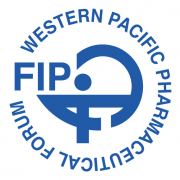[WHO]: News Update (October)
Reference: http://www.who.int/en/
—
Improving the lives of children with spina bifida and hydrocephalus
25 October 2012 — Spina bifida and other congenital anomalies kill an estimated 270 000 newborns every year, while many more live with long-term disability. WHO guidelines on community-based rehabilitation help therapists like Ambrose Ganshanga who is working in rural Uganda develop programmes to improve survival and quality of life. Learn more about his work in this feature story and photo gallery.
- Read the feature on spina bifida in Uganda
- View the photo gallery on spina bifida in Uganda
- Read the fact sheet on congenital anomalies
Declining cases of polio
23 October 2012 — Polio eradication partners around the world are marking World Polio Day (24 October), the first since India was removed from the list of countries with active transmission of wild poliovirus. This development provides a historic opportunity to complete polio eradication in the three remaining endemic countries. Since 1988, the number of polio cases has been reduced by more than 99%. Complete elimination of polio in the next five years would save over US$ 40 billion.
Working together to beat cholera
19 October 2012 — A cholera outbreak in Sierra Leone has killed almost 300 people and affected more than 20 000. Without support to sustain and expand the response operation, as many as 32 000 cases could be expected this year. This photo gallery displays images of the cholera response operation in New Town, a slum in Aberdeen Bay, Sierra Leone.
20 million lives saved through tuberculosis care and control
17 October 2012 — An estimated 20 million people are alive today as a direct result of tuberculosis (TB) care and control, according to the WHO Global tuberculosis report 2012. In the space of 17 years, 51 million people have been successfully treated and cared for according to WHO recommendations.
- Read the press release on TB care and control
- Read the feature story on Cambodia’s success in TB control
News releases
- 20 million lives saved through TB care and control
17 October 2012 — An estimated 20 million people are alive today as a direct result of tuberculosis (TB) care and control, according to the WHO Global tuberculosis report 2012. - ITU and WHO launch mHealth initiative to combat noncommunicable diseases
17 October 2012 — A new partnership called the ‘mHealth’ Initiative was launched today. The Initiative uses mobile technology, in particular text messaging and apps, to help combat noncommunicable diseases (NCDs) such as diabetes, cancer, cardiovascular diseases and chronic respiratory diseases.
WHO highlights
-
October 2012
Launching the Global Vaccine Safety Initiative
The new Global Vaccine Safety Initiative (GVSI) web site is live as of 16 October 2012. The web site outlines actions that will be taken to achieve the eight objectives of the Blueprint – on vaccine safety monitoring, evaluation of safety signals, communication, internationally harmonized tools, regulatory frameworks, global technical support, expert advice, and interaction between stakeholders.
-
October 2012
Investment case for eliminating mother-to-child transmission of syphilis
Mother-to-child transmission of syphilis (commonly referred to as “congenital syphilis”) is relatively simple to eliminate. Congenital syphilis is also inexpensive to detect and treat. Investing in screening and treatment for syphilis in pregnant women ranks as one of the most cost-effective antenatal interventions.
Features
- New immunization approach in Ethiopia reaches more children
October 2012 - Preventing drowning in the Philippines
October 2012
Disease Outbreak News
Most recent news items
- 22 October 2012
Marburg haemorrhagic fever in Uganda – update - 21 October 2012
Marburg haemorrhagic fever in Uganda - 17 October 2012
Dengue Fever in Madeira, Portugal - 10 October 2012
Novel coronavirus infection – update
The Access and Control Newsletter
This newsletter will update you on both issues of drug control as well as access to controlled medicines, especially if the World Health Organization is involved. Generally speaking, these issues will be any matter related to the evaluation of substances within the framework of the UN drug conventions, especially the 1961 and 1971 Conventions, and any matter related to WHO’s Access to Controlled Medications Programme (ACMP) The newsletter will be published at irregular intervals, but certainly not more than once a month.
